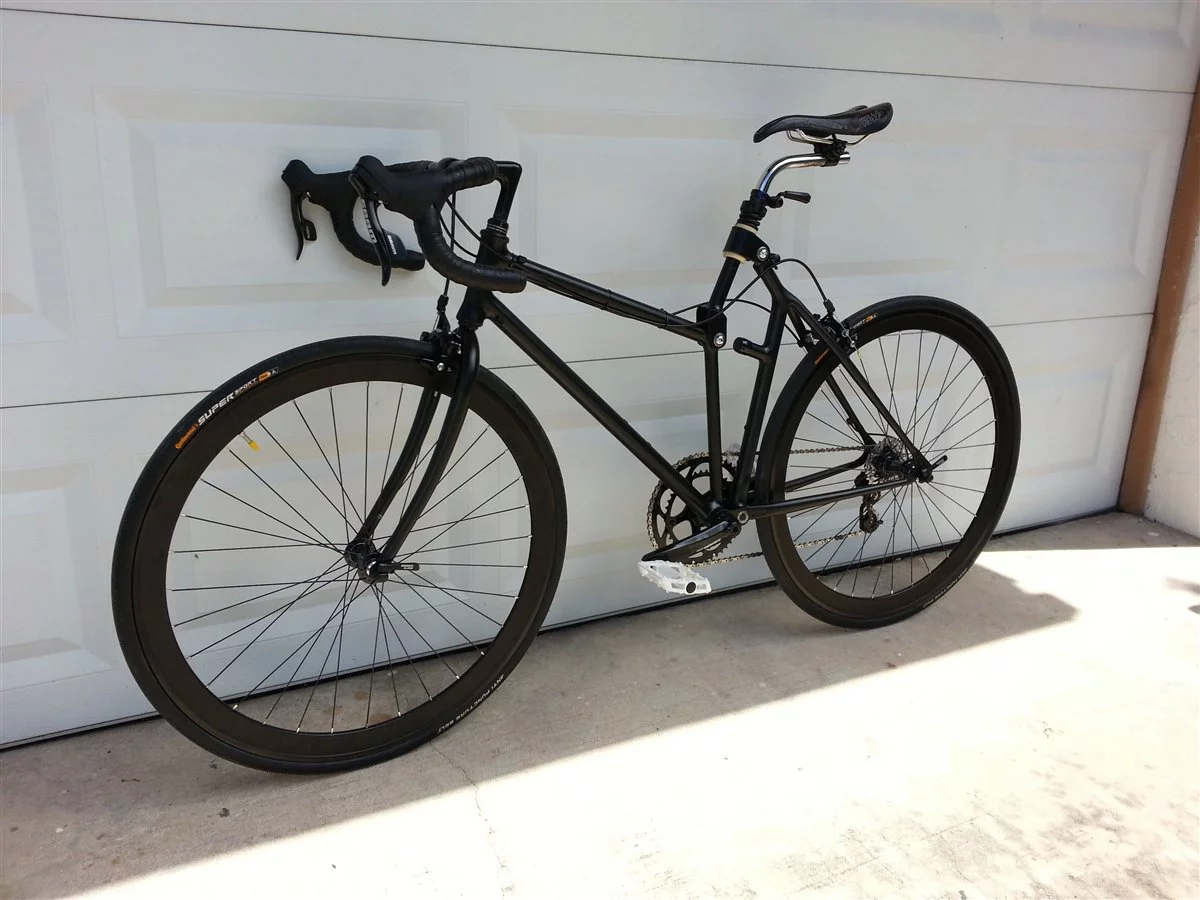When you want to climb or sprint on your bike, what do you do? That's right, you get your butt off the saddle and shift your weight forward. According to Tampa-based inventor Felton Zimmerman, however, going off-saddle like that hampers your performance. His solution? The Darwin Bicycle. It features a folding frame that automatically moves the saddle forward with you, so you're always seated.
Here's how the Darwin works.
The frame's rear triangle is joined to the front triangle by a pivot located near the bottom bracket. At the top of the rear triangle, a shock absorber-like cylinder extends from it to a collar that slides up and down along the length of the seat post. Additionally, the bottom of the seat post is joined to the front triangle by a hinge, allowing the post to tip forward or backward relative to the frame.

When the rider is sitting normally, their weight holds both the rear triangle and the seat post back in their normal position. When they shift their weight forward, however, the rear triangle pivots forward with them, pushing the seat post (and saddle) forward as it does so.
The process is illustrated in the animation below.
By staying in the saddle, says Zimmerman, riders are able to better maintain control, they don't waste as much energy moving from side to side, and they are able to deliver more torque to the pedals. The folding-in of the frame also results in a shorter wheelbase, making the bike's steering more responsive. Additionally, the height of the bottom bracket drops when the folding occurs, lowering the rider's center of gravity for increased stability.
Zimmerman recently had a single functioning prototype on display at the North American Handmade Bicycle Show, although he has plans for a whole line of bikes including road, hybrid, city and off-road models. He told us that he's aiming for prices in the US$1,200 to $1,500 range, depending on the selection of components.
And as for whether the Darwin will actually work as advertised ... well, we'll just have to wait and try one out.
Company website: Darwin Bicycles








